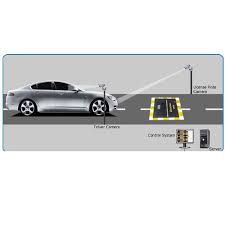Traffic Management: Enhancing Safety and Efficiency on the Roads
Traffic management plays a crucial role in ensuring the safety and efficiency of our roads. With the ever-increasing number of vehicles on the streets, effective traffic management systems have become more important than ever before. These systems aim to regulate traffic flow, minimize congestion, and prevent accidents.
One of the key components of traffic management is intelligent transportation systems (ITS). ITS utilizes advanced technologies to monitor and control traffic conditions in real-time. These systems collect data from various sources such as sensors, cameras, and GPS devices to provide valuable insights into traffic patterns.
One common application of ITS is the implementation of adaptive traffic signal control systems. These systems use real-time data to adjust signal timings based on current traffic conditions. By dynamically optimizing signal cycles, adaptive signal control helps to reduce travel times and congestion at intersections.
Another important aspect of traffic management is the use of surveillance cameras for monitoring roadways. High-definition cameras placed strategically along highways and major roads allow authorities to closely monitor traffic conditions. In case of accidents or incidents, these cameras provide valuable evidence for investigation purposes.
Furthermore, advanced technologies like automatic number plate recognition (ANPR) are being employed for effective enforcement of traffic rules. ANPR systems use optical character recognition technology to capture license plate numbers and cross-reference them with databases containing information on vehicle registration and violations. This helps in identifying vehicles that are involved in illegal activities or have outstanding fines.
In recent years, smart city initiatives have also contributed significantly to improving traffic management. Smart city solutions integrate various technologies such as sensors, communication networks, and data analytics to enhance urban mobility. For instance, smart parking systems utilize real-time data to guide drivers towards available parking spaces, reducing congestion caused by drivers searching for parking spots.
Moreover, traffic management systems are increasingly incorporating predictive analytics to anticipate traffic congestion and plan accordingly. By analyzing historical data and considering factors like weather conditions, events, and holidays, these systems can proactively manage traffic flow and divert vehicles to less congested routes.
Efficient traffic management is not only beneficial for drivers but also for the environment. By minimizing congestion and optimizing traffic flow, we can reduce fuel consumption and lower greenhouse gas emissions. Additionally, improved traffic management systems facilitate the smooth movement of emergency vehicles, ensuring timely response during emergencies.
In conclusion, traffic management plays a vital role in maintaining safe and efficient roadways. With the help of intelligent transportation systems, surveillance technologies, and smart city solutions, authorities can effectively regulate traffic flow, minimize congestion, and enhance overall road safety. As our cities continue to grow, investing in advanced traffic management systems becomes imperative to ensure a smooth and sustainable transportation network.
9 Essential Tips for Effective Traffic Management and Safer Driving
- Follow traffic rules and regulations.
- Always wear your seatbelt while driving.
- Observe the speed limit at all times.
- Maintain a safe distance from the vehicle in front of you.
- Use turn signals to indicate your intentions when changing lanes or making turns.
- Avoid using mobile phones while driving to prevent distractions.
- Be aware of pedestrians and give them the right of way when necessary.
- Regularly check your vehicle’s brakes, lights, and tires for proper functioning.
- Stay calm and patient in traffic congestion or stressful situations.
Follow traffic rules and regulations.
Following traffic rules and regulations is a fundamental aspect of effective traffic management. Adhering to these rules not only ensures our own safety but also contributes to the overall smooth flow of traffic. By obeying speed limits, using indicators while changing lanes, stopping at red lights, and yielding to pedestrians, we can create a safer environment for everyone on the roads. It is essential to recognize that traffic rules are in place for a reason – to prevent accidents and maintain order. Therefore, by being responsible and respectful road users, we can actively contribute to efficient traffic management.
Always wear your seatbelt while driving.
One of the most important tips for traffic management is to always wear your seatbelt while driving. Wearing a seatbelt is not only a legal requirement but also a crucial safety measure that can significantly reduce the risk of injuries in case of an accident. Seatbelts are designed to restrain occupants and prevent them from being thrown out of the vehicle or colliding with the interior during sudden stops or collisions. By buckling up, you prioritize your safety and contribute to creating a safer road environment for everyone.
Observe the speed limit at all times.
Observing the speed limit at all times is a crucial tip for effective traffic management. Speed limits are set based on various factors such as road conditions, visibility, and the presence of pedestrians or other vehicles. By adhering to these speed limits, drivers can ensure the safety of themselves and others on the road. Excessive speeding not only increases the risk of accidents but also reduces the driver’s ability to react to unexpected situations. Respecting and following speed limits is a responsible and essential practice that contributes to smoother traffic flow and enhances overall road safety.
Maintain a safe distance from the vehicle in front of you.
Maintaining a safe distance from the vehicle in front of you is a crucial tip for effective traffic management. By keeping a sufficient gap, you allow yourself enough time to react and maneuver in case of sudden braking or emergencies. This not only reduces the risk of rear-end collisions but also helps in maintaining a smooth flow of traffic. Adhering to this simple yet important practice promotes safer driving conditions, prevents unnecessary congestion, and contributes to overall road safety for everyone on the road.
Use turn signals to indicate your intentions when changing lanes or making turns.
Using turn signals is a crucial practice for effective traffic management. When changing lanes or making turns, it is essential to signal your intentions using turn signals. This simple yet important action alerts other drivers about your intended movements, allowing them to anticipate and adjust their driving accordingly. By using turn signals consistently, we can promote smoother traffic flow, reduce the risk of accidents, and enhance overall road safety. Remember, indicating your intentions through turn signals is a responsible and considerate behavior that contributes to a more efficient and harmonious driving experience for everyone on the road.
Avoid using mobile phones while driving to prevent distractions.
Using mobile phones while driving is a major cause of distractions on the road. It is crucial to avoid this practice to ensure effective traffic management. When drivers are focused on their phones, their attention is diverted from the road, increasing the risk of accidents. By refraining from using mobile phones while driving, individuals can prioritize their safety and that of others around them. This simple tip can go a long way in preventing distractions and promoting responsible driving habits for a safer and more efficient traffic environment.
Be aware of pedestrians and give them the right of way when necessary.
In effective traffic management, it is crucial to prioritize the safety and well-being of pedestrians. Being aware of pedestrians and giving them the right of way when necessary is a fundamental tip for ensuring a harmonious coexistence between vehicles and pedestrians on the roads. Pedestrians are vulnerable road users, and it is our responsibility as drivers to be attentive and respectful towards them. By yielding to pedestrians at crosswalks, zebra crossings, or when they are crossing the road, we not only promote their safety but also contribute to creating a culture of mutual respect and consideration on our streets. Remember, a small act of giving way can make a significant difference in preventing accidents and fostering a safer environment for everyone.
Regularly check your vehicle’s brakes, lights, and tires for proper functioning.
Regularly checking your vehicle’s brakes, lights, and tires for proper functioning is a crucial tip for effective traffic management. Ensuring that your brakes are in good condition allows you to respond quickly and safely to unexpected situations on the road. Properly functioning lights, including headlights, taillights, and indicators, not only help you see clearly but also make your intentions clear to other drivers. Additionally, regularly inspecting your tires for adequate tread depth and inflation levels ensures optimal grip and stability, reducing the risk of accidents. By taking these simple yet important steps, you contribute to maintaining road safety and promoting smooth traffic flow.
Stay calm and patient in traffic congestion or stressful situations.
In the face of traffic congestion or stressful situations on the road, it is essential to stay calm and patient. It can be frustrating to be stuck in traffic or encounter unexpected delays, but reacting with anger or impatience only exacerbates the situation. By maintaining a calm and patient demeanor, we not only reduce our own stress levels but also contribute to a safer and more harmonious traffic environment. Keeping a cool head allows us to make rational decisions, follow traffic rules diligently, and avoid engaging in aggressive or reckless behavior. Remember, staying calm and patient in challenging traffic situations promotes better road safety for everyone involved.




